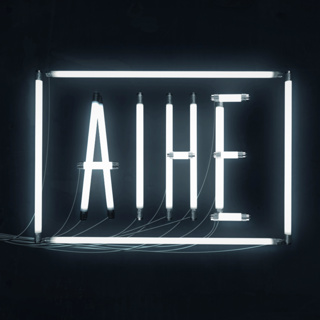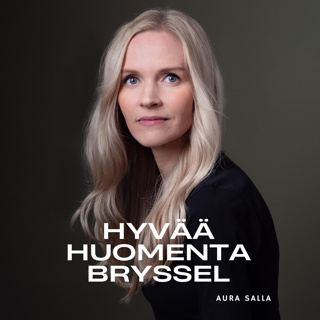
Mega Edition: Jeffrey Epstein And The Decades Long Pattern Of Pervasive Abuse (10/15/25)
Jeffrey Epstein’s pattern of abuse was long-running and systematic: beginning with credible allegations in Palm Beach in 2005 and stretching across decades, Epstein cultivated vulnerable girls through grooming, money, and promises of modeling or work, then trafficked and sexually exploited them. Investigations, victim affidavits, and later federal indictments show repeated conduct in Florida and New York (and allegations of international trafficking), with dozens of women ultimately coming forward to describe similar schemes of enticement, coercion, and delegation of abuse to associates. The 2008 plea deal in Florida — a non-prosecution agreement that treated many allegations as state-level misdemeanors and granted immunity protections — allowed Epstein to avoid federal accountability for years and left many victims feeling their claims were minimized or legally blocked from fuller exposure.Subsequent developments — the 2019 federal indictment, the unsealing of court records and victim statements, Department of Justice reviews of the 2008 NPA, and the ongoing release of seized files and civil filings — have documented the scale and persistence of the abuse while also exposing how legal protections, institutional failures, and financial secrecy helped shield Epstein’s network. Flight logs, property searches, witness interviews, and civil litigation consistently mapped the same playbook: recruitment of underage girls, payments and hush-money tactics, and use of staff and associates to facilitate access. Even with many documents now public, significant questions remain about the full scope of Epstein’s enablers, the flows of his finances, and who benefited from the secrecy that let the abuse go on for so long.to contact me:bobbycapucci@protonmail.comBecome a supporter of this podcast: https://www.spreaker.com/podcast/the-moscow-murders-and-more--5852883/support.
15 Loka 28min

The Mega Edition: Sara Rivers And Her Allegations Against Diddy (Parts 17-18) (10/14/25)
Plaintiff Sara Rivers files this complaint in Case No. 1:25-cv-01726, bringing legal action against the defendant based on personal knowledge, information, and belief. Represented by legal counsel, Rivers outlines the specific allegations, detailing the defendant's alleged misconduct and the legal grounds supporting the claims. The complaint asserts that the defendant’s actions have caused harm and seeks accountability through the judicial system.This lawsuit requests appropriate legal remedies, including compensation and other relief deemed necessary by the court. The filing establishes jurisdiction, presents supporting facts, and sets forth claims that Rivers intends to prove. Through this action, the plaintiff seeks justice and redress for the alleged wrongdoing, holding the defendant legally responsible for the damages incurred.to contact me:bobbycapucci@protonmail.comsource:Sara cmpltBecome a supporter of this podcast: https://www.spreaker.com/podcast/the-moscow-murders-and-more--5852883/support.
15 Loka 27min

The Scientific Report In Support Of Bryan Kohberger's Motion To Change The Venue (Part 4)
The scientific report on the effects of media coverage on prospective jurors in Latah County examined the impact of pretrial publicity on the jury pool for the Bryan Kohberger case. Kohberger, accused of murdering four University of Idaho students, has been the subject of extensive media coverage, which has raised concerns about the potential bias among jurors.Key points from the report include:Media Influence: The report highlighted how pervasive media coverage can shape public perception, often leading to preconceived notions of guilt or innocence. This is particularly problematic in high-profile cases like Kohberger's, where intense media scrutiny can taint the jury pool.Survey Findings: A survey conducted by a trial consultant on behalf of the defense indicated that the more someone knew about the case, the more likely they were to believe Kohberger was guilty. This survey included questions that incorporated both true and false information to gauge the extent of misinformation and its effect on potential jurors.Pretrial Publicity: The report underscores the difficulty of finding unbiased jurors in Latah County due to the saturation of media coverage. It suggests that prospective jurors exposed to extensive pretrial information are more likely to have formed opinions about the case.Defense Strategy: The defense team used the survey data to argue for a change of venue, claiming that an impartial trial would be difficult to achieve in Latah County. They contended that the media coverage had created a presumptive bias against Kohberger, necessitating the trial to be moved to a different location to ensure fairness.Judicial Response: The court acknowledged the potential impact of media coverage on jurors and temporarily halted the survey to review its methodology and ensure compliance with non-dissemination orders. The defense argued that continuing the survey in other counties was crucial for a comparative analysis to determine an appropriate venue for the trial.These findings reflect the complex interplay between media coverage and the judicial process, emphasizing the need for careful consideration to maintain the integrity of the legal proceedings.(commercial at 7:41)to contact me:bobbycapucci@protomail.comsource:072224-Memorandum-Support-MCoV.pdfBecome a supporter of this podcast: https://www.spreaker.com/podcast/the-moscow-murders-and-more--5852883/support.
15 Loka 11min

The Scientific Report In Support Of Bryan Kohberger's Motion To Change The Venue (Part 3)
The scientific report on the effects of media coverage on prospective jurors in Latah County examined the impact of pretrial publicity on the jury pool for the Bryan Kohberger case. Kohberger, accused of murdering four University of Idaho students, has been the subject of extensive media coverage, which has raised concerns about the potential bias among jurors.Key points from the report include:Media Influence: The report highlighted how pervasive media coverage can shape public perception, often leading to preconceived notions of guilt or innocence. This is particularly problematic in high-profile cases like Kohberger's, where intense media scrutiny can taint the jury pool.Survey Findings: A survey conducted by a trial consultant on behalf of the defense indicated that the more someone knew about the case, the more likely they were to believe Kohberger was guilty. This survey included questions that incorporated both true and false information to gauge the extent of misinformation and its effect on potential jurors.Pretrial Publicity: The report underscores the difficulty of finding unbiased jurors in Latah County due to the saturation of media coverage. It suggests that prospective jurors exposed to extensive pretrial information are more likely to have formed opinions about the case.Defense Strategy: The defense team used the survey data to argue for a change of venue, claiming that an impartial trial would be difficult to achieve in Latah County. They contended that the media coverage had created a presumptive bias against Kohberger, necessitating the trial to be moved to a different location to ensure fairness.Judicial Response: The court acknowledged the potential impact of media coverage on jurors and temporarily halted the survey to review its methodology and ensure compliance with non-dissemination orders. The defense argued that continuing the survey in other counties was crucial for a comparative analysis to determine an appropriate venue for the trial.These findings reflect the complex interplay between media coverage and the judicial process, emphasizing the need for careful consideration to maintain the integrity of the legal proceedings.(commercial at 7:41)to contact me:bobbycapucci@protomail.comsource:072224-Memorandum-Support-MCoV.pdfBecome a supporter of this podcast: https://www.spreaker.com/podcast/the-moscow-murders-and-more--5852883/support.
15 Loka 11min

The Scientific Report In Support Of Bryan Kohberger's Motion To Change The Venue (Part 2)
The scientific report on the effects of media coverage on prospective jurors in Latah County examined the impact of pretrial publicity on the jury pool for the Bryan Kohberger case. Kohberger, accused of murdering four University of Idaho students, has been the subject of extensive media coverage, which has raised concerns about the potential bias among jurors.Key points from the report include:Media Influence: The report highlighted how pervasive media coverage can shape public perception, often leading to preconceived notions of guilt or innocence. This is particularly problematic in high-profile cases like Kohberger's, where intense media scrutiny can taint the jury pool.Survey Findings: A survey conducted by a trial consultant on behalf of the defense indicated that the more someone knew about the case, the more likely they were to believe Kohberger was guilty. This survey included questions that incorporated both true and false information to gauge the extent of misinformation and its effect on potential jurors.Pretrial Publicity: The report underscores the difficulty of finding unbiased jurors in Latah County due to the saturation of media coverage. It suggests that prospective jurors exposed to extensive pretrial information are more likely to have formed opinions about the case.Defense Strategy: The defense team used the survey data to argue for a change of venue, claiming that an impartial trial would be difficult to achieve in Latah County. They contended that the media coverage had created a presumptive bias against Kohberger, necessitating the trial to be moved to a different location to ensure fairness.Judicial Response: The court acknowledged the potential impact of media coverage on jurors and temporarily halted the survey to review its methodology and ensure compliance with non-dissemination orders. The defense argued that continuing the survey in other counties was crucial for a comparative analysis to determine an appropriate venue for the trial.These findings reflect the complex interplay between media coverage and the judicial process, emphasizing the need for careful consideration to maintain the integrity of the legal proceedings.(commercial at 7:41)to contact me:bobbycapucci@protomail.comsource:072224-Memorandum-Support-MCoV.pdfBecome a supporter of this podcast: https://www.spreaker.com/podcast/the-moscow-murders-and-more--5852883/support.
14 Loka 12min

The Scientific Report In Support Of Bryan Kohberger's Motion To Change The Venue (Part 1)
The scientific report on the effects of media coverage on prospective jurors in Latah County examined the impact of pretrial publicity on the jury pool for the Bryan Kohberger case. Kohberger, accused of murdering four University of Idaho students, has been the subject of extensive media coverage, which has raised concerns about the potential bias among jurors.Key points from the report include:Media Influence: The report highlighted how pervasive media coverage can shape public perception, often leading to preconceived notions of guilt or innocence. This is particularly problematic in high-profile cases like Kohberger's, where intense media scrutiny can taint the jury pool.Survey Findings: A survey conducted by a trial consultant on behalf of the defense indicated that the more someone knew about the case, the more likely they were to believe Kohberger was guilty. This survey included questions that incorporated both true and false information to gauge the extent of misinformation and its effect on potential jurors.Pretrial Publicity: The report underscores the difficulty of finding unbiased jurors in Latah County due to the saturation of media coverage. It suggests that prospective jurors exposed to extensive pretrial information are more likely to have formed opinions about the case.Defense Strategy: The defense team used the survey data to argue for a change of venue, claiming that an impartial trial would be difficult to achieve in Latah County. They contended that the media coverage had created a presumptive bias against Kohberger, necessitating the trial to be moved to a different location to ensure fairness.Judicial Response: The court acknowledged the potential impact of media coverage on jurors and temporarily halted the survey to review its methodology and ensure compliance with non-dissemination orders. The defense argued that continuing the survey in other counties was crucial for a comparative analysis to determine an appropriate venue for the trial.These findings reflect the complex interplay between media coverage and the judicial process, emphasizing the need for careful consideration to maintain the integrity of the legal proceedings.(commercial at 7:41)to contact me:bobbycapucci@protomail.comsource:072224-Memorandum-Support-MCoV.pdfBecome a supporter of this podcast: https://www.spreaker.com/podcast/the-moscow-murders-and-more--5852883/support.
14 Loka 13min

Liza Gardner And The Lawsuit Filed Against Diddy (Part 9) (10/14/25)
Liza Gardner’s lawsuit, filed in November 2023 under New York’s Adult Survivors Act, alleges that in 1990 she was sexually assaulted by Sean “Diddy” Combs and singer Aaron Hall when she was 16 years old. According to her complaint, Gardner attended an event hosted by MCA Records, where she and a friend were given drinks and then invited to an after-party at Hall’s apartment. She claims Combs coerced her into having sex with him, then as she was dressing, Hall entered the room, pinned her down, and forced her to have sex with him too. She also asserts that in the days following the assault, Combs came to her home, beat and choked her until she lost consciousness.In her amended complaint, Gardner emphasizes that she was a minor at the time—under New York’s age of consent in 1990—and contends that she could not legally consent to drinking alcohol with the accused. She further alleges that the sexual assault left her with lasting psychological harm, including depression, post-traumatic stress disorder, and difficulty forming relationships.to contact me:bobbycapucci@protonmail.comsource:gov.uscourts.njd.551633.42.0.pdfBecome a supporter of this podcast: https://www.spreaker.com/podcast/the-moscow-murders-and-more--5852883/support.
14 Loka 7min

Tea, Titles, and Trafficking: Prince Andrew’s Cozy Correspondence With Jeffrey Epstein (10/14/25)
Prince Andrew has become the walking definition of hypocrisy — a royal parasite sitting comfortably in Royal Lodge while pretending “no one is above the law.” The newly unearthed emails to Jeffrey Epstein — where Andrew tells him “we’re in this together” and “we’ll play some more later” — blow his past denials to pieces. They confirm what everyone suspected: that his supposed “cutting ties” was a lie, that he was still fraternizing with a convicted predator, and that he thought his title made him untouchable. The arrogance, the entitlement, the shamelessness — it’s all laid bare. Any other man would’ve been in handcuffs already, but Andrew’s punishment was “stepping back from duties,” which is just PR code for taking a royal sabbatical with full benefits.The whole spectacle is a slap in the face to justice and the people who still believe in it. These emails aren’t just bad optics — they’re the final nail in the coffin of his credibility and the monarchy’s moral facade. It’s not just Andrew’s disgrace anymore; it’s the entire royal bloodline reeking of rot while the system bends over backward to shield him. If “no one is above the law” actually meant something, this man wouldn’t be sipping tea behind palace walls — he’d be answering questions under oath like any ordinary citizen. Until that happens, the phrase might as well be engraved on Buckingham Palace gates in gold leaf, right above the real motto: Accountability for thee, but never for me.to contact me:bobbycapucci@protonmail.comBecome a supporter of this podcast: https://www.spreaker.com/podcast/the-moscow-murders-and-more--5852883/support.
14 Loka 13min





















